How relieve neck pain ?
We are going to tell you that “How relieve neck pain ?” You’ll also be going to know “Causes and Treatment of Neck pain and most importantly “What to do to prevent Neck pain“.
If you want to know How to relive your neck pain, you have basic understanding of common cause of Neck pain, Anatomy of Neck and How Neck pain is diagnoses and common medical and Physiotherapy treatment and exercises.
Here we informed you basic understanding of Neck anatomy, causes, symptom’s, diagnosis procedure and medical and Physiotherapy treatment, exercises and ergonomic of neck.
Neck pain can be caused by a number of factors eg. Neck muscle pain / strain, ligament sprains, Neck arthritis, or cervical disc pain with or without nerve root pain.
As per recent study 10 percent of adults have neck pain at any one time. The majority of patients, regardless of the cause of pain, recover with conservative Physiotherapy treatment and exercise. Severity of Neck pain may not correlate with abnormalities seen on imaging of the neck.
The neck pain is due in part to bio-mechanics. your day to day activity that affect cervical bio-mechanics include long computer sitting, repetitive neck movement, accidents, falls and blows to the body or head, normal aging, and everyday wear and tear.
Table of Contents
Anatomy of Neck :
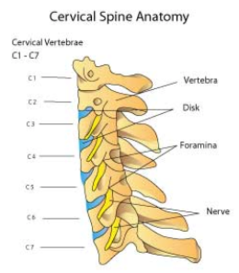
Neck is formed by The cervical spine vertebrae starts at the base of the skull. There are 7 vertebrae creates the cervical spine with 8 pairs of cervical nerves. The individual cervical vertebrae are called C1, C2, C3, C4, C5, C6, and C7. The cervical nerves are also accordingly ; they are C1 through C8.
The cervical the vertebrae(bones) are smaller in size when compared to other spinal vertebrae (in your thoracic or lumbar spines). This vertebrae of the cervical spine is to contain and protect the spinal cord, support the skull, and enable diverse head movement (eg, rotate side to side, bend forward and backward).
Neck have ligaments, tendons, and muscles help to support and stabilize the cervical spine. Ligaments work to prevent excessive neck movement that could result in serious injury and also stabilize vertebrae.
Paraspinal neck Muscles also help to provide spinal balance and stability, and make movement. Muscles contract and relax in response to nerve impulses that starts in the brain.
Neck Movement : Flexion, Extension, Side flexion and Rotation – Cervical spine movement maximum at C-4-5-6, So higher the movement, higher the chances of Injury (wear and tear), so mostly neck pain occurs at the level of C-4-5-6, However it can occurs at any levels.
Which are the Causes of Neck Pain ?
Muscle Pain and Strain :
This is usually due to your day to day activities such as:
- Bad posture
- working at a computer for too long without changing position
- sleeping with your neck in a bad position/ wrong position pillow
- Overexercise / jerking your neck during exercise.
Cervical disc prolapse :
Sudden jerky activity around neck creates a disk protrudes, as from a trauma or injury, it may create pressure on the spinal cord or nerve roots. This is called a cervical disk prolapse, also known as a ruptured or slipped disk.
Cervical spondylosis :
As you age, the cervical discs and vertebrae can degenerate. This is known a cervical spondylosis (osteoarthritis of the neck). This can reduce the space between the vertebrae and compress the nerve root. It also adds stress to your neck joint movement.
Neck Injury
The neck is particularly increased the risk of injury, especially during falls on neck and shoulder eg. car accidents, high intensity sports, where the muscles and ligaments of the neck are forced to move outside of their normal range.
If the neck bones (cervical vertebrae) are fractured, this may cause injury to the the spinal cord. Neck injury due to sudden jerking of the head is commonly called whiplash injury. This is serious injury require medical emergency.
Heart attack
Neck pain can also be a associated symptom of a heart attack, but it often presents with other symptoms of a heart attack, such as:
- Increase Heart Rate / shortness of breath
- sweating
- nausea
- vomiting
- shoulder- arm or jaw pain
If your neck hurts and you have other symptoms of heart attack, call an ambulance or go to the emergency treatment immediately.
Meningitis
Meningitis is an inflammation of the thin tissue that surrounds the brain and spinal cord. In people who have meningitis, a fever and a headache often associated with a stiff neck. Meningitis can be fatal and is also a medical emergency.
If you have the symptoms of meningitis, take medical experts help immediately.
Rheumatoid arthritis causes joint pain, swelling and bone spurs. When these happen in the neck area, neck pain can result.
Cervical Spinal canal stenosis occurs when the spinal vertebrae narrows and causes pressure on the spinal cord or the nerve roots as it exits the vertebrae. This can be due to long-term inflammation caused by arthritis or other related conditions.
Osteoporosis weakens bones and can lead to small fractures. This condition often happens in arms or leg, but it can also occur in the cervical area.
Fibromyalgia is also a condition where muscle pain occurs throughout in the body, mainly it affects the neck and shoulder region.
Neck pain symptom’s and sign :
Muscle spasm :
Paraspinal neck muscle and Trapezius muscle spasm are common in neck pain, A spasm is a sudden, powerful, involuntary contraction of muscles. The muscles feel painful, stiff and knotted. If you have neck muscle spasms, you may cause neck stiffness. Your Physiotherapist may call it acute wry neck.
Neck Muscle ache :
The Paraspinal neck muscles are sore and may have hard knots (trigger points) that are tender to touch. Pain is often felt up the middle of the back of the neck, or it may ache on one side only.
Neck Stiffness :
The neck muscles are become tight and if you spend too long in one position they increase your neck stiffness. Neck stiffness can make it difficult to move your neck or painful neck movement.
Nerve Radiating pain :
Pain from the neck to shoulder can radiate down the arms, and sometimes, the legs. You have feeling a sensation of pins and needles or tingling in your arms, which can be associated with numbness, burning or weakness.
Cervicogenic Headaches :
Cervicogenic Headaches are common with neck pain and other related symptom’s. They are usually a dull aching type of headache, rather than sharp pain. While the headaches are often felt at the back side of the head, the pain may also radiate to the sides, and even the front of the head.
Reduced range of motion of neck :
If you can’t turn your head to the side to the same degree towards each shoulder, or you feel limited in how far forward you can lower your head to your chest, or how far you can tilt your head back, you may have reduced range of motion. Your doctor will be able to test this.
Diagnosis :
X-rays : X-rays can shows which areas in your neck (cervical vertebrae) where your nerve root or spinal cord might be compressed by bone spurs or other degenerative changes.
CT scan : CT scans have X-ray images taken from many different directions to produce detailed cross-sectional views of the cervical spinal structures of your neck.
MRI (Magnetic resonance Imaging) : MRI uses radio waves and a strong magnetic field to create detailed images of bones and soft tissues, including the spinal cord and the nerves coming from the spinal cord.
Electromyography (EMG) / NCV : If your doctor suspects your neck pain might be related to a pinched nerve, he or she might suggest an EMG. In NCV examination inserting fine needles through your skin into a muscle and performing tests to measure the speed of nerve conduction to determine whether specific nerves are working properly or not.
Blood tests : Blood tests can sometimes provide evidence of inflammatory (Rheumatoid) or infectious conditions that might be causing or contributing to your neck pain.
Medical Treatment in Neck Pain :-
Commonly prescribed treatment is symptomatic Pain reliever Analgesics medicine (NSAIDS) eg. aceclofenac/diclofenac and Muscle relaxant to relieve muscle ache, Pain reliever Patches and Gel are useful.
Analgesics : Mild pain is often relieved with acetaminophen.
Nonsteroidal anti-inflammatory drugs (NSAIDs) : eg. Aceclofenac, Diclofenac are considered first-line medications for neck pain. They helps in reducing neck pain and related symptom’s mainly muscle spasm and swelling and prescribed for a few weeks depending upon severity of your symptom’s and how responding your body to this medicine.
Other types of pain reliever can be used if you have any contraindications to NSAIDs or if your neck pain is not controlled.
Oral corticosteroids : If NSAIDs is not relieving your neck pain in sever cases – A Tapering dose of oral corticosteroids can help relieve pain by reducing symptoms.
Muscle relaxants : If Neck muscles spasm are severe Medications eg. cyclobenzaprine or carisoprodol can be use.
Cervical collar : A soft cervical collar is worn around the neck to support the head during your day to day activity. Routine use of a cervical collar is not recommended because it may cause stiff neck or allow the neck muscles to weaken. Fit cervical collars can make neck pain worse in some people due to the tight of the collar.
Using Big or two pillows is not recommended because it can cause too forward flexion or side-bending of the neck and also increase your neck pain.
Home remedies of Neck Pain :
Use of ice pack or hot pack :
Ice pack and Hot packs for Neck pain may be applied to help reduce pain, spasm and swelling. Hot packs may be applied to increase blood flow and loosen stiff muscles. sometimes heat and cold therapy combination may be helpful called contrast bath, depending on the patient’s injury or preferences.
This is most natural and easy to do home remedies. Mostly neck pain improves gradually with home treatment. If not, consult your doctor.
Massage therapy :-
A massage can help loosen and relax muscles, which may reduce Neck pain and stiffness. During treatment of neck pain, it is common for the back of the neck and surrounding areas to be massaged, including the back of the head, shoulders, and back.
Exercise to relieve neck pain :
Exercise will help you strengthen your neck muscles and also improve function of neck movement. Following exercise may recommended by your Physiotherapist such as :
- Active Neck movement.
- Isometric Neck movement (INE)
- Shoulder Scapular Exercise (SSE)
Active Neck movement :
Neck flexion exercise (Neck tilt) :
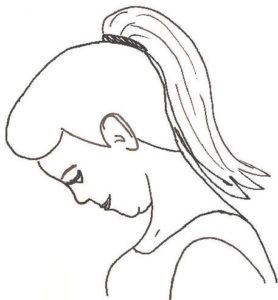
- In Relax sitting position flex your head down to rest your chin on your chest (Flex the neck fully).
- Gently tense your neck muscles and hold for 4 to 8 seconds.
- Return to a neutral position and repeat 10 times.
Neck flexion (side to side) :
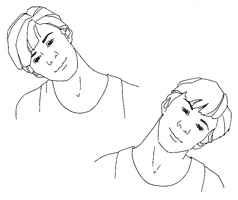
- Flex your head down towards your shoulder, try to touch your to shoulder with your ear (Without elevate your shoulder).
- Gently tense your neck muscles and hold for 8 seconds.
- Return your head to neutral position and repeat on the opposite direction.
- Repeat 10 times on each side
Neck Rotation exercise :
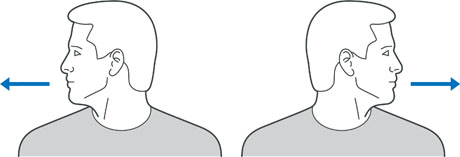
- Rotate your head towards one side, keeping your chin at the same height and moving within comfortable limits.
- Gently stretch your neck muscles and hold for 8 seconds.
- Return your head to the neutral position and repeat on the opposite direction.
- Repeat 10 times on each side.
Neck forward – Backward stretch exercise :
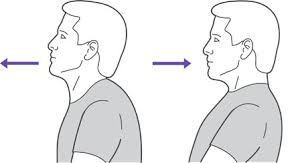
- In relax sitting position, with the straight Body, push your chin forward so your throat is stretched.
- Gently tense your neck muscles and hold for 8 seconds.
- Return your head to the neutral position and push it backwards, keeping your chin up.
- Hold for 8 seconds.
- Repeat 10 times.
Isometric Neck Exercise :
Isometric neck exercise helps to strengthen your neck muscles. This exercise mostly recommended by Physiotherapist from day one to relive Neck pain.
How to perform this exercise :
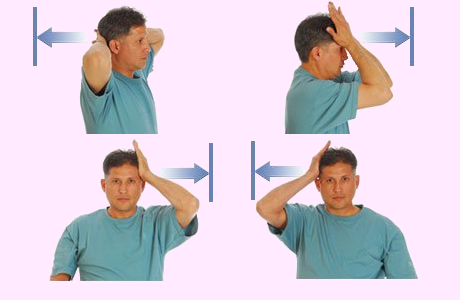
In sitting Position, keep your Body straight, Put your both hands behind the neck (as seen in images) and try your neck to push pressure on hands and the same time Resist with your neck muscles, both hands maintain align position for 4 to 5 seconds and then relax.
First day do 8 repetitions and second day 10 repetition. Do same exercise on your forehead and each-side of the neck.
Do the exercise by pressing on the side of your head. Repeat 8 times, then alter sides.


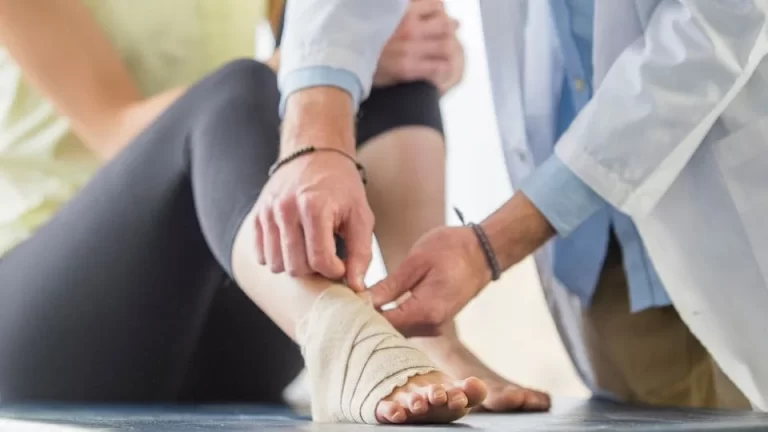

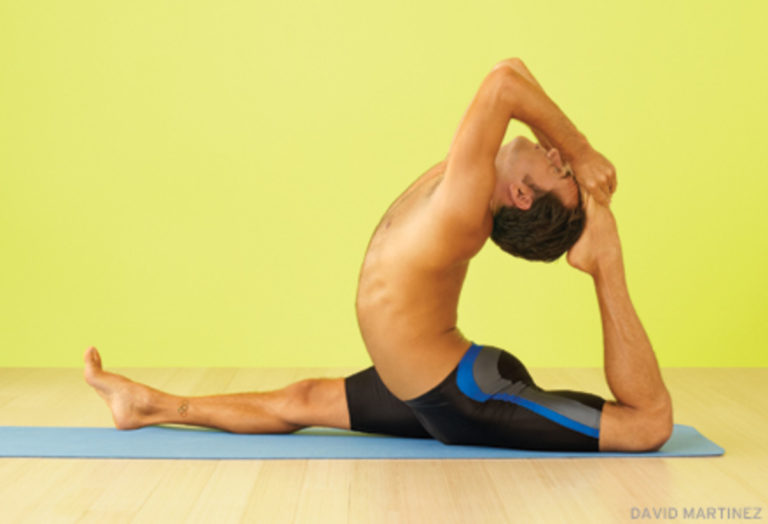

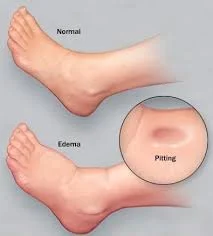

6 Comments